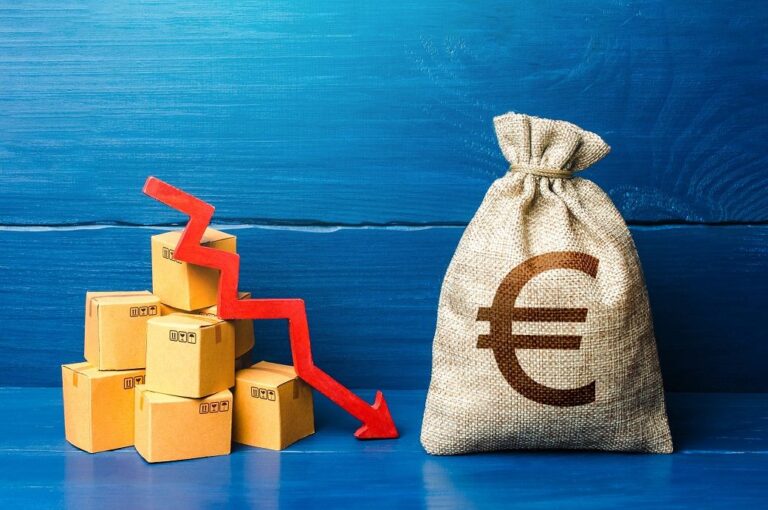
[ad_1]
The Eurozone Composite PMI (Purchasing Managers’ Index) is produced by financial intelligence firm S&P Global and is based on original survey data collected from a representative panel of around 5,000 manufacturing and services firms. National manufacturing data are included for Germany, France, Italy, Spain, the Netherlands, Austria, the Republic of Ireland, and Greece.
The Eurozone’s latest Purchasing Managers’ Index data shows a further dip in business activity with the seasonally adjusted S&P Global Eurozone PMI Composite Output Index below the 50.0 no change mark for the second month running in August, dipping to 48.9 from 49.9 in July. The decline was particularly marked in the euro area’s largest economy, Germany.
Weakness in activity generally reflected falling demand, with new orders also down at a faster pace midway through the third quarter. Employment continued to rise, but the rate of job creation softened amid lower workloads and muted business confidence. While remaining elevated, rates of inflation of both input costs and output prices continued to soften, providing some respite for firms.
Although still only modest, the rate of contraction signalled in the latest survey period was more pronounced than that seen at the start of the third quarter. The overall reduction in output reflected declining activity across both the manufacturing and services sectors in August, as services activity moved into contraction for the first time since March 2021. That said, the reduction in output at service providers was only marginal and much weaker than that seen for manufacturers, where production declined solidly again.
Manufacturing output has now fallen in three consecutive months. Falling activity was largely a function of a worsening demand environment, with steep inflationary pressures and associated cost of living concerns leading clients to hold off on buying decisions.
National PMI data indicated that Germany was the key driver of the overall decline in eurozone business activity, seeing output contract at a solid pace that was the steepest since the initial wave of the COVID-19 pandemic. The only other country to see activity decrease at the composite level was Italy, where output dropped for the second month running, albeit marginally in August.
Although output continued to increase in France, Spain and Ireland, rates of expansion were only modest and slowed to the weakest in 17, seven and 18 months respectively. New business across the euro area declined for the second month running in August, and at a sharper pace that was the most marked since November 2020. As was the case with output, both sectors posted reductions in new orders, with manufacturers seeing the steeper contraction.
International demand also remained under pressure, with new export orders decreasing for the sixth month running. In fact, the drop in new business from abroad was faster than that seen for total new orders. Despite falls in activity and new business, companies across the eurozone expanded their workforce numbers again midway through the third quarter, largely reflective of continued efforts to rebuild capacity following the pandemic. Higher employment was seen across each of the monitored countries. That said, the overall rate of job creation softened for the third month running amid a weakening demand environment, with the latest rise in staffing levels the slowest since March 2021.
A combination of higher employment and lower new orders meant that companies were able to keep on top of workloads, and backlogs of work decreased for the second month running as a result. The rate of input cost inflation continued to ease from the series record posted in March, reaching the slowest in almost a year in August. That said, input prices continued to rise at a pace unprecedented prior to the current spike in inflation since the series began in 1998.
Output prices increased at a softer pace, but one that was among the sharpest on record. Similar price trends were seen across the two monitored sectors. Business expectations remained historically muted, despite a slight improvement in sentiment since July. A renewed positive outlook in manufacturing compared with services confidence ticking down to the lowest since October 2020.
Fibre2Fashion News Desk (NB)
[ad_2]
Source link